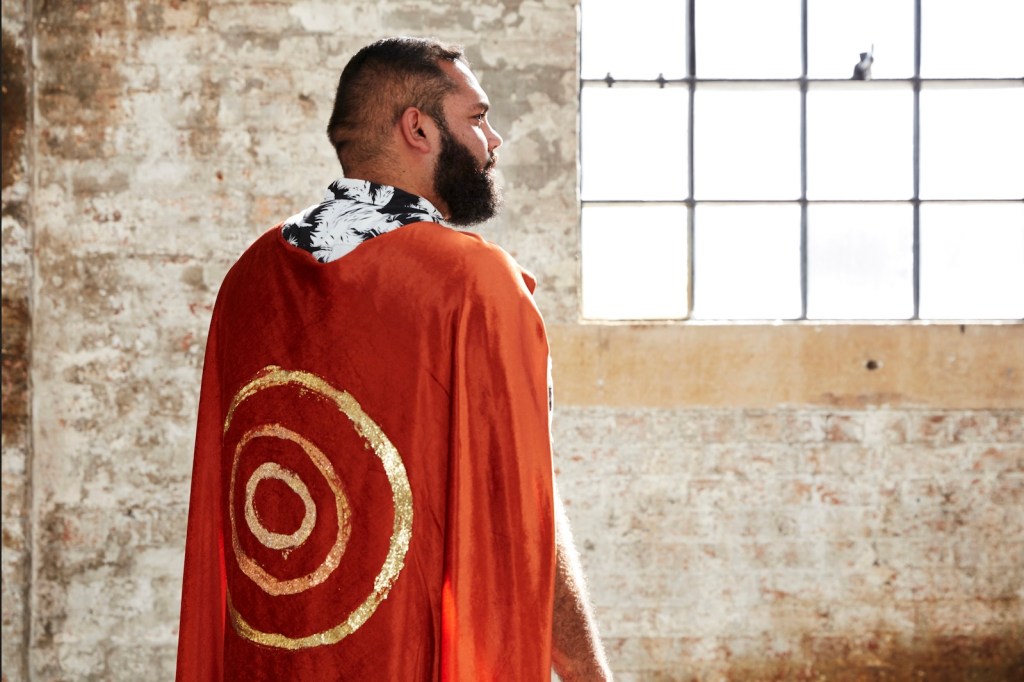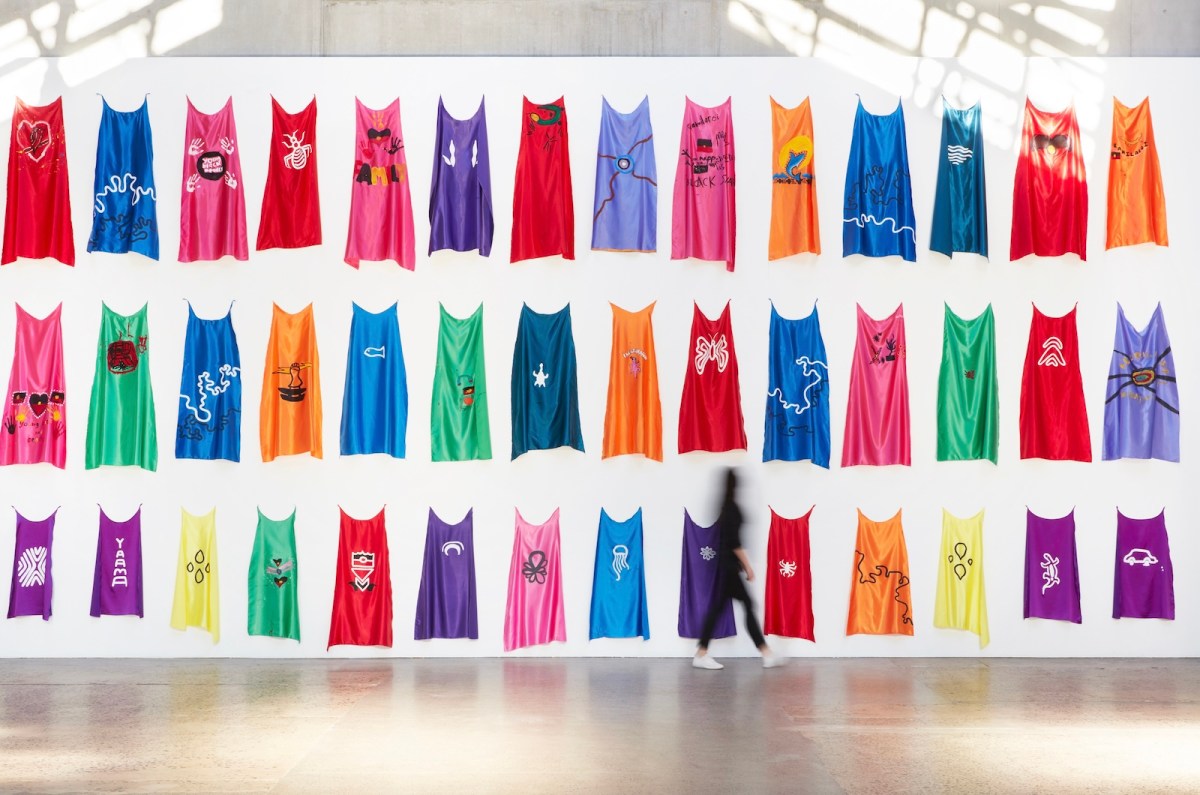Power – seizing power, wielding power, and having agency or power over one’s destiny – are concepts as old as humanity itself. But reality often offers up a different narrative.
In the hands of First Nations artist Dennis Golding (Kamilaroi/Gamilaraay), power takes a new approach – it is collaborative, it is youth-led and it is about storytelling for a better world.
Curated by Kyra Kum-Sing (a Malera Bandjalan, Mitakoodi woman and curator at Boomalli Aboriginal Artists Co-operative) the exhibition Dennis Golding | POWER – The Future is Here presents a suite of silky, hand-painted superhero capes, as bright and bold as any billboard.
The capes have been charged with the task of inspiring regional communities – in particular Aboriginal and Torres Strait Island youth.
The exhibition has emerged out of the Solid Ground project, established in partnership with Carriageworks and Blacktown Arts in 2015 as a gateway for education and employment for Indigenous youth in inner-city Sydney. As a participant of the program in 2020, Golding worked with Alexandria Park Community School, not far from Redfern’s “The Block”, where he grew up.
‘I felt that superhero capes were perfectly fitted to conversations with kids and young people,’ Golding tells ArtsHub. ‘The whole symbolism of the cape comes from childhood memories – mum gave me my first Batman or superhero costume when I was six years old and I remember, as a kid, putting that cape on and feeling invincible.
‘There’s something really powerful about it,’ he adds.

Golding wants to extend that same sense of power, joy and strength to kids today, ‘so these young people are able to think about their culture and traditional knowledge with pride, but also to bring it into more of a contemporary experience.’
The result is a series of superhero capes painted by 100 young people, each turning to a symbol or an icon drawn from their own memory or connection to country. The capes were first presented in the exhibition POWER at Blacktown Arts (2021) and then Carriageworks in The Future is Here (2021). A version of the project will now tour with Museums & Galleries of NSW (M&GNSW) to 10 regional communities over the next two years.
How superhero symbolism can unify communities
The innocence of childhood play can be a great equaliser. Essentially, we can all wear capes together for a better world. ‘What we’re really doing here is, we’re creating these ideas about the future generations of leaders in our communities,’ explains Golding of the exhibition’s title, The Future is Here.
He adds that the exhibition allows young people to talk about what power means to them.
‘This whole project was for them to think about their own identity, and make connections to that – to think of a superhero power that resembles who they are as a person, and to ask, “Who are our local heroes? What do we think of when we are wearing a superhero cape?”, and also “Why should we wear a superhero cape?” It is about understanding how young people are inspired by people in their community, their families, and their friends.’
Golding believes touring the exhibition to regional communities will be a great way to empower Aboriginal youth. It pivots from the entry point of superheroes and villains in comics culture, ‘and relating that kind of history of how Aboriginal people feel like they’ve been depicted as the villains. And, then to create these capes to give a more powerful representation of Aboriginal identity.’
He continues: ‘Aboriginal identity hasn’t [had] the best representation, especially for us growing up in Redfern. I think that’s the great thing about this project – that we’re also creating these conversations about identity and culture and community out in the regions where a lot of this needs to come out, not just in the metropolitan areas.
‘And even if I’m not traveling to every town with the exhibition, it allows those communities to create their own programs around it, which is really special,’ Golding concludes.
National Tour Itinerary
Wagga Wagga Art Gallery, NSW: until 10 March 2024
Bondi Pavilion Art Gallery, NSW: 23 March – 5 May 2024
Maitland Regional Art Gallery, NSW: 6 July – 13 October 2024
Bank Art Museum Moree, NSW: 26 October – 7 December 2024
Grafton Regional Gallery, NSW: 20 December 2024 – 9 February 2025
Moreton Bay Galleries, QLD: 22 February – 17 May 2025
Mulga Lands Gallery, Charleville, QLD: 30 May – 1 August 2025
Hyphen Wodonga, VIC: 19 September – 30 November 2025
South East Centre for Contemporary Art, Bega, NSW: 2025 – 2026
Learn more about the Museums & Galleries of NSW touring program.





